| Subfamily | Genera | Species |
| Curculioninae | 26 | 108 |
| Bagoinae | 1 | 21 |
| Baridinae | 2 | 7 |
| Ceutorhynchinae | 29 | 92 |
| Cossoninae | 11 | 15 |
| Cryptorhynchinae | 3 | 5 |
| Cyclominae | 1 | 2 |
| Entiminae | 21 | 109 |
| Hyperinae | 2 | 18 |
| Lixinae | 6 | 11 |
| Mesoptiliinae | 1 | 8 |
| Molytinae | 9 | 15 |
| Orobitidinae | 1 | 1 |
| Scolytinae | 30 | 64 |
| Tanysphyrinae | 1 | 1 |
With the exception of the Scolytinae these species are known as weevils. Historically the family has undergone many nomenclature changes and shufflings and as research continues it seems as though the group is nowadays more fluid than ever. For a brief insight into the problematic nature of curculionid nomenclature one should read the introduction to Morris' 2002 handbook. This is frustrating for the non-specialist because it becomes ever more difficult to keep up with and to appreciate and understand the various groups. For the purpose of listing and describing local fauna such matters need not concern the naturalist, here all we need is the ability to find specimens and identify them. But matters of nomenclature etc will concern the amateur coleopterist because the amateur coleopterist is interested in beetles per se as well as in the local fauna. This website is concerned with all aspects of coleoptera because its creators are passionate about such things and for this reason we will attempt to describe and illustrate the subfamilies in more detail than is needed for a purely practical approach.
Becoming familiar with the weevils is a formidable task which demands lots of time, work and, to be frank, a passion for the group.
The keys in Joy's handbook while (obviously) lacking the various species and groups added since its creation, and while (blatantly) pushing its luck with many groups remains useful and on the whole simple to use, Furthermore, because of the number and density of the line drawings it may be useful when starting ot to simply compare a specimen with the drawings page after page until something sensible is found, going back to the keys afterwards can be very instructive. Weevils also tend to be well represented in general guides to beetles and there are several internet sites (other than this one) that feature enough species well enough to allow a broad familiarity with the group before on the RES handbooks by Morris which so far (2008) cover well over half our species. These handbooks are not particularly difficult to use but they are technical and thorough and so some broad familiarity with the group will be a great advantage.
From our pictures it is obvious that weevils are a very characteristic group which, with the exception of several species of the Heteromeran Salpingidae, will not be confused with any other. The Scolytinae are atypical in being cylindrical and having no rostrum and small species may be taken for Bostrychidae or Ciidae but they share two basic curculionid features; geniculate antennae and broadly bilobed third tarsal segments. Histeridae feature this type of antennae but possess very different tarsi. With a little practice and experience the curculionid antennae are immediately recognisable.
There are several other families of weevils found in Britain, all of which are distinct and readily separated from the Curculionidae as follows:Possession of geniculate antennae with a compact club will exclude Anthribidae, Attelabidae, Urodontidae, Apionidae and the eyeless raymondionymidae. With two basal abdominal sternites connate (fused), elytra striate excludes Nemonychidae. With short trochanters excludes Nanophyidae (2 very distinct species).
The two British basic forms of Curculionidae are summarised as follows:
Curculionidae (excluding Scolytinae) 1.5-5mm Head without neck. Antennae clubbed and geniculate, scape longer than next 2 segments, with well developed rostrum, sometimes broad and short (Entiminae). Elytra covering abdomen, usually broader than pronotum. Many species with scales and/or pubescence dorsally and/or laterally. Underside variously grooved or excavate to receive appendages. Tarsi pseudotetramerous, 3rd segment usually strongly bilobed.
Curculionidae (Scolytinae). 1.2-6mm Near cylindrical and heavily sclerotised species, mostly wood borers. Antennae with less than 8 segments, geniculate and with well develoed club. Elytra sometimes excavate behind.
Weevils feed on various parts of plants including leaves, flowers, seeds, wood and roots and most species are restricted to a narrow range of hosts while many are monophagus. Morris gives comprehensive lists of host plants and feeding sites for the species dealt with so far in the RES handbooks. Knowing which species of plant a weevil is associated with can thus be a powerful aid to identification. As we describe the local fauna we will cover such things as hosts and seasonal occurence so that interested parties will stand a good chance of observing them in the wild. Trying to provide a family overview with only our local material for reference is difficult and would mean leaving out several interesting groups, so, whether we have a species or not, we will describe all the groups of British weevils.

Anthonomus
pedicularius

Anthonomus
pedicularius
Anthonomus
pedicularius

Anthonomus
pomorum

Anthonomus
rubi

Archarius
pyrrhoceras
Archarius
pyrrhoceras
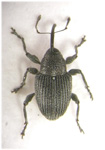
Archarius
salicivorus

Cionus
alauda

Cionus
scrophulariae
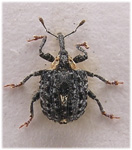
Cionus
tuberculosus
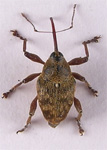
Curculio
glandium
Curculio
glandium
Curculio
nucum
Curculio
nucum

Curculio
rubidus

Curculio
venosus

Dorytomus
dejeani
Dorytomus
dejeani
Dorytomus
dejeani
Dorytomus
dejeani

Dorytomus
ictor

Dorytomus
longimanus
Dorytomus
longimanus
Dorytomus
longimanus
Dorytomus
longimanus

Dorytomus
rufatus
Dorytomus
taeniatus
Dorytomus
taeniatus
Dorytomus
taeniatus
Dorytomus
taeniatus
Dorytomus
taeniatus

Dorytomus
tortrix

Ellescus
bipunctatus

Gymnetron
villosulum
Gymnetron
villosulum
Gymnetron
villosulum
Gymnetron
villosulum
Gymnetron
villosulum

Mecinus
janthinus

Mecinus
pascuorum
Mecinus
pascuorum
Mecinus
pascuorum

Mecinus
pyraster
Mecinus
pyraster

Miarus
campanulae

Orchestes
fagi

Orchestes
pilosus

Orchestes
quercus
Orchestes
quercus
Orchestes
quercus

Orchestes
rusci

Rhampus
pulicarius

Rhinusa
linariae

Tachyerges
salicis

Tychius
junceus

Tychius
meliloti

Tychius
picirostris

Tychius
picirostris

Tychius
schneideri
Tychius
schneideri

Ceutorhynchus
obstrictus
Ceutorhynchus
obstrictus

Ceutorhynchus
pallidactylus
Ceutorhynchus
pallidactylus
Ceutorhynchus
pallidactylus

Ceutorhynchus
picitarsis

Ceutorhynchus
typhae

Coeliodes
rana

Coeliodes
ruber

Coeliodes
transversealbofasciatus

Datonychus
melanostictus

Drupentatus
nasturtii

Ethelcus
verrucatus
Ethelcus
verrucatus

Glocianus
moelleri

Hadroplontus
litura
Hadroplontus
litura
Hadroplontus
litura

Hadroplontus
trimaculatus

Hadroplontus
trimaculatus

Micrelus
ericae
Micrelus
ericae

Microplontus
campestris

Nedyus
quadrimaculatus
Nedyus
quadrimaculatus
Nedyus
quadrimaculatus
Nedyus
quadrimaculatus
Nedyus
quadrimaculatus

Parethelcus
pollinarius
Parethelcus
pollinarius
Parethelcus
pollinarius

Rhinoncus
pericarpius

Trichosirocalus
troglodytes
Trichosirocalus
troglodytes
Trichosirocalus
troglodytes
Trichosirocalus
troglodytes
Trichosirocalus
troglodytes

Euophryum
confine
Euophryum
confine
Euophryum
confine
Euophryum
confine

Acalles
ptinoides

Barynotus
moerens
Barynotus
moerens

Barypeithes
araneiformis

Barypeithes
pellucidus
Barypeithes
pellucidus
Barypeithes
pellucidus
Barypeithes
pellucidus

Coelositona
cambricus

Neliocarus
nebulosus
Neliocarus
nebulosus

Neliocarus
sus
Neliocarus
sus

Otiorhynchus
ovatus

Otiorhynchus
rugosostriatus
Otiorhynchus
sulcatus
Otiorhynchus
sulcatus
Otiorhynchus
sulcatus

Otiorhynchus
singularis

Polydrusus
cervinus
Polydrusus
cervinus

Polydrusus
formosus
Polydrusus
formosus

Polydrusus
marginatus
Polydrusus
marginatus

Polydrusus
pterygomalis
Polydrusus
pterygomalis

Polydrusus
tereticollis

Philopedon
plagiatum

Phyllobius
argentatus
Phyllobius
argentatus
Phyllobius
argentatus
Phyllobius
glaucus

Phyllobius
glaucus

Phyllobius
maculicornis
Phyllobius
maculicornis
Phyllobius
maculicornis

Phyllobius
oblongus
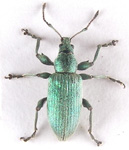
Phyllobius
pomaceus
Phyllobius
pomaceus
Phyllobius
pomaceus
Phyllobius
pomaceus
Phyllobius
pomaceus

Phyllobius
pyri
Phyllobius
pyri
Phyllobius
pyri
Phyllobius
pyri
Phyllobius
pyri

Phyllobius
roboretanus
Phyllobius
roboretanus
Phyllobius
roboretanus

Phyllobius
virideaeris
Phyllobius
virideaeris
Phyllobius
virideaeris

Phyllobius
viridicollis

Sciaphilus
asperatus

Sitona
hispidulus

Sitona
lepidus
Sitona
lepidus
Sitona
lepidus

Andrion
regensteinense

Sitona
humeralis

Sitona
lineatus
Sitona
lineatus
Sitona
lineatus

Sitona
striatellus
Sitona
striatellus

Sitona
sulcifrons

Strophosoma
capitatum
Strophosoma
capitatum

Strophosoma
melanogrammum

Hypera
meles

Hypera
nigrirostris

Hypera
plantaginis
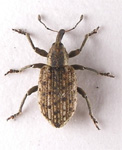
Hypera
pollux

Hypera
zoilus

Rhinocyllus
conicus

Magdalis
armigera

Magdalis
cerasi

Anoplus
plantaris

Leiosoma
deflexum

Hylastinus
obscurus

Hylesinus
varius

Drycoetes
villosus

Hylastes
angustatus

Hylurgops
palliatus
Hylurgops
palliatus

Tomicus
piniperda

Trypodendron
domesticum
Trypodendron
domesticum

Tanysphyrus
lemnae